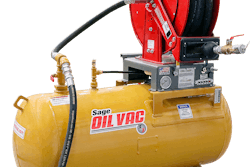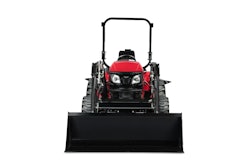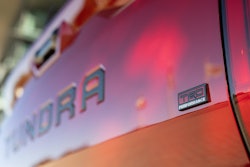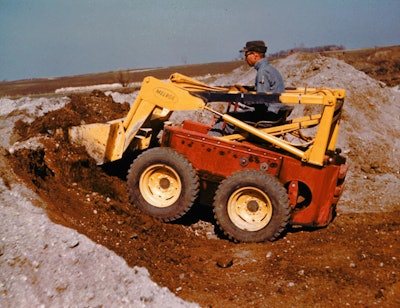
The brothers who invented the first compact loader, later named the Bobcat skid steer loader, have been posthumously recognized as 2023 inductees of the National Inventors Hall of Fame.
Within the heavy equipment industry, Bobcat Company, via Cyril and Louis Keller's invention, is often considered the forefather of the compact construction equipment industry.
Family members of the Kellers attended the NIHF Illumination and Induction Ceremonies held October 25-26 in Washington, D.C., to celebrate their achievement. “If Dad and Cyril were here to accept this award, they would accept it for all the early and current Bobcat employees that have all helped bring the little Keller loader to be the Bobcat machine it is today,” said Louis’ son Joe Keller.
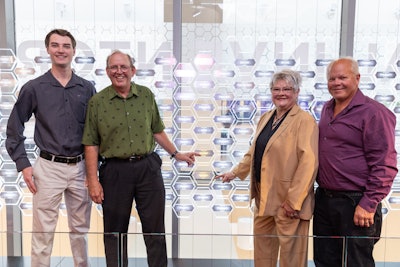 Family members of Cyril and Louis Keller were in attendance during the NIHF Illumination and Induction Ceremonies held Oct. 25-26 in Washington, D.C. to celebrate the brothers' posthumous achievement of being recognized by the National Inventors Hall of Fame.Bobcat
Family members of Cyril and Louis Keller were in attendance during the NIHF Illumination and Induction Ceremonies held Oct. 25-26 in Washington, D.C. to celebrate the brothers' posthumous achievement of being recognized by the National Inventors Hall of Fame.Bobcat
“There is no one that the Bobcat loader hasn’t affected or helped through life – even though they may not know it,” Joe Keller said. “While we may not always realize its impact, it is an integral part of our everyday life – from supporting farm operations that result in food on our tables to hauling materials around a jobsite building our homes and offices.”
A Bit of History
None of the current innovations coming out of Bobcat today would have ever been possible without the company reaching out to the Kellers about their original invention.
Before the demonstration of their ingenuity, construction machines came in one size: big. For smaller jobs, workers used shovels and wheelbarrows because there were no machines that were compact and powerful.
Cyril and Louis were operating a machinist blacksmith shop in Minnesota in the 1950s, building and repairing machinery for local farmers. In 1956, a farmer approached them with the unique need for a machine that was light enough to be lifted to the second floor of his turkey barn and small enough to maneuver around the barn poles to clean up the manure.
Standard loader tractors at the time were too heavy to tread safely on a second story and too unwieldy to navigate around the barn poles. An answer to the farmer’s problem simply didn’t exist at the time, and the Keller brothers were determined to sort it out.
Within six weeks, they developed a small, lightweight three-wheel front-end loader in their shop in Rothsay, using parts from local junkyards and bars from the old community jail for the fork teeth.
The first effort, tested at the customer’s farm, had two drive wheels in front and a caster wheel in the rear. It had hydraulic foot pedals for the bucket. The patented clutch system operated with two hand levers was one of the keys. It allowed for one side of the loader to be put in reverse and the other into forward, without the use of a gearshift or a steering wheel, allowing for a zero-turn radius.
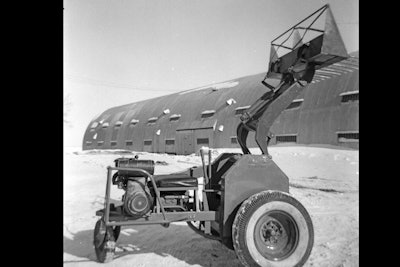 The first Keller loaderad had two drive wheels in front and a caster wheel in the rear.Bobcat
The first Keller loaderad had two drive wheels in front and a caster wheel in the rear.Bobcat
Ultimately, Melroe Manufacturing Company (today known as Bobcat Company), invited the Kellers to demonstrate their invention at the 1958 Minnesota State Fair.
Upon completion of the successful demonstration, Melroe Manufacturing was awarded exclusive manufacturing rights to the machine on a royalty basis and hired the Keller brothers to refine the design and put it into production.
Design improvements included the addition of a second set of drive wheels on the back of the loader, dubbed the M400, in 1960. That machine is the first four-wheel skid steer loader.
The second axle gave the M400 four-wheel drive and made it the first requiring wheels for directional control.
The M440, the first model with the Bobcat name, entered the market in 1962 and offered enhanced maneuverability and enhanced bucket control. The Bobcat brand name was established because of the machine’s toughness, quickness, and agility.
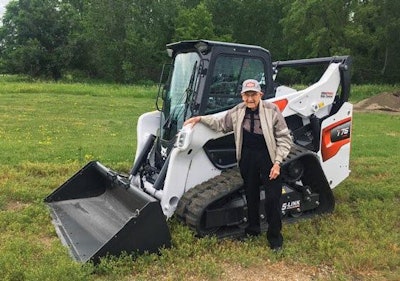 Cyril Keller and his brother designed the first loader. Here, he poses with a much more advanced R-series model.Bobcat
Cyril Keller and his brother designed the first loader. Here, he poses with a much more advanced R-series model.Bobcat
Today, the Kellers’ spirit of inventiveness lives on as Bobcat continues to strive to innovate for the jobsite of the future.
"We are proud of our inventors' spirit of innovation, and while we remain grounded in our humble roots, we continue to push the boundaries to offer customers increased choice, improved performance, and advanced technology to work smarter," said Mike Ballweber, president, Bobcat Company North America.
Having produced the all-electric T7X compact track loader and revealed the S7X all-electric skid steer, Bobcat gave customers a peek at its take on the next evolution of compact equipment at ConExpo 2023 with the Rogue X.
The company now offers more than 100 products in the compact, grounds maintenance, and industrial equipment industries, and produces more than 400 different types of attachments.
Today, more than 1 million Bobcat skid-steer loaders have been sold worldwide and are used at construction sites, farms, railyards, and seaports.
The company and the Keller’s invention were previously recognized in 2004 by the American Society of Agricultural and Biological Engineers recognized the Kellers’ skid-steer loader as a Historic Landmark. Cyril and Louis Keller were inducted into the Association of Equipment Manufacturers Hall of Fame in 1999 and the Minnesota Inventors Hall of Fame in 2004.
In celebration of the national recognition of the Keller brothers, Bobcat has its history on display in a new exhibit within the NIHF Museum. The museum exhibit features one of the Keller brothers’ original three-wheel loaders, along with a timeline of Bobcat’s history and a video display highlighting various aspects of Bobcat’s products, people, and initiatives.
The Bobcat exhibit will be on display through April 2024.
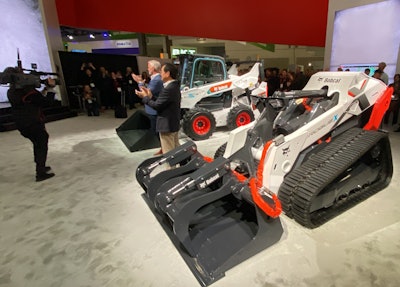 Bobcat officials unveiled the latest innovations at ConExpo 2023, the S7X electric skid steer loader and the RogueX autonomous/remote control concept. Both machines retain historical connection to the original Keller loader design.Equipment World
Bobcat officials unveiled the latest innovations at ConExpo 2023, the S7X electric skid steer loader and the RogueX autonomous/remote control concept. Both machines retain historical connection to the original Keller loader design.Equipment World





